
News got worse for Australia’s tourism industry on Friday, with the release of the overseas short-term arrivals and departures figures for June showing a record number of departures over the year, led by the bogan hot spots of Bali and Thailand.
Although short-term visitor arrivals increased by 3.3% in June, outweighing the 1.0% increase in short-term resident departures, the number of residents departing hit an all-time high on both a monthly and annual basis.
In the 12 months to June 2012, the annual number of departures increased by 7.6% relative to the corresponding period of the prior year, whereas arrivals rose by only 1.4%.
Taking a longer-term view, the ratio of annual tourism arrivals to departures also remains at 25-year lows (see below chart).
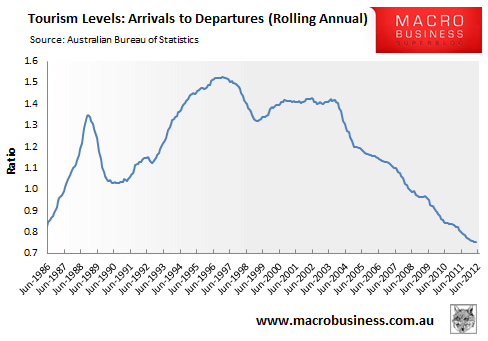
And as suggested above, the fall in the ratio of arrivals to departures has been caused predominantly by an exodus of Australians choosing to travel abroad rather than domestically:
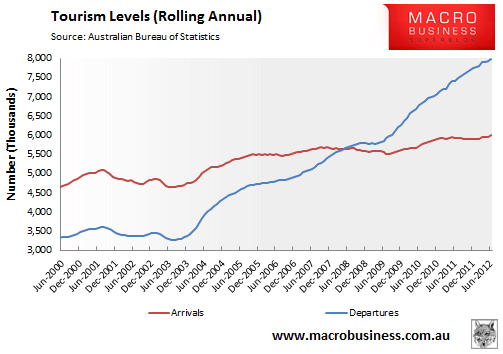
In the year to June 2012, a record 8.0 million Australians holidayed overseas – more than double the level of 10 years ago (3.4 million). This compares to only 6.0m tourist arrivals over the same period (4.8 million 10 years ago).
South East Asia (particularly Indonesia and Thailand) remains Australia’s favourite holiday destination, receiving a record 219,000 visitors in June, or 32% of Australia’s total departures over the month. This was followed by Oceania (20%), the Americas (13%), North East Asia (11%) and North West Europe (11%):
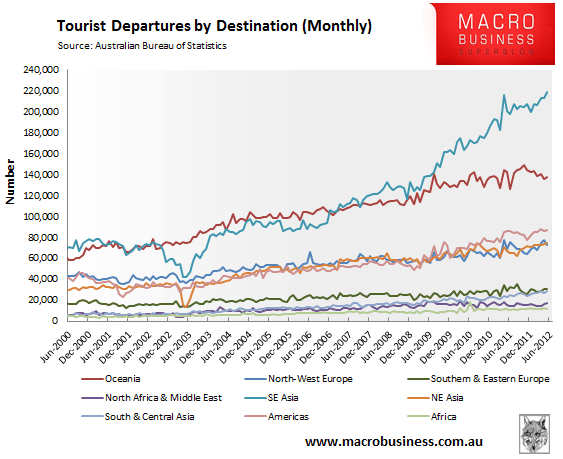
As usual, the Aussie bogan’s lust for Bali and Thailand, in particular, is driving much of the decline in Australian tourism, with departures to Indonesia (Bali) rising 10% over the year to a new record high, whereas trips to Thailand increased by 15% over the same period. Your’s truly has contributed to this rise, with a recent trip to Thailand adding to the bogan exodus.
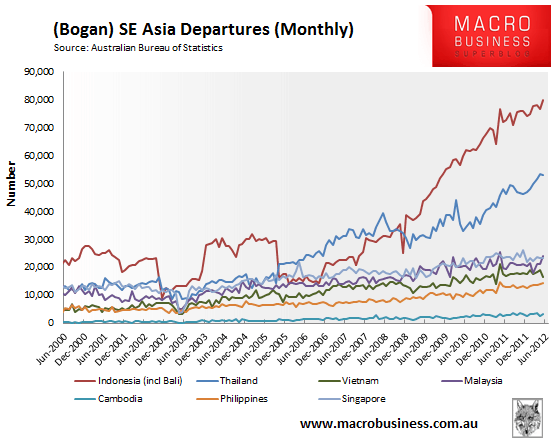
By contrast, the most foreign visitors to Australia came from Oceania (mostly New Zealand) and North East Asia, which each accounted for 23% of arrivals in June 2012. This was followed by North Western Europeans (19%) and South East Asians (15%):
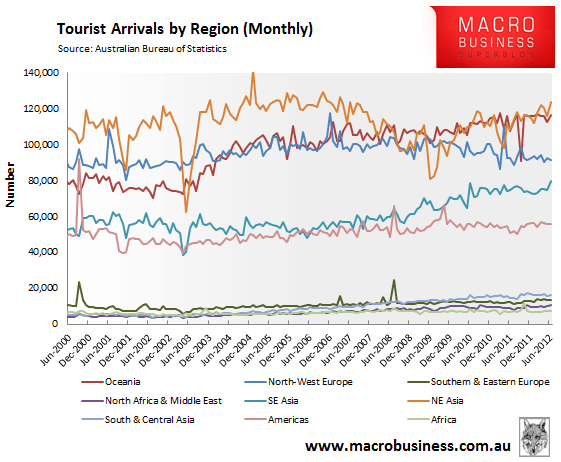
With the Aussie dollar refusing to follow commodity prices lower, expect the pain for Australia’s tourism industry to continue.
Twitter: Leith van Onselen. Leith is the Chief Economist of Macro Investor, Australia’s independent investment newsletter covering trades, stocks, property and yield. Click for a free 21 day trial.

